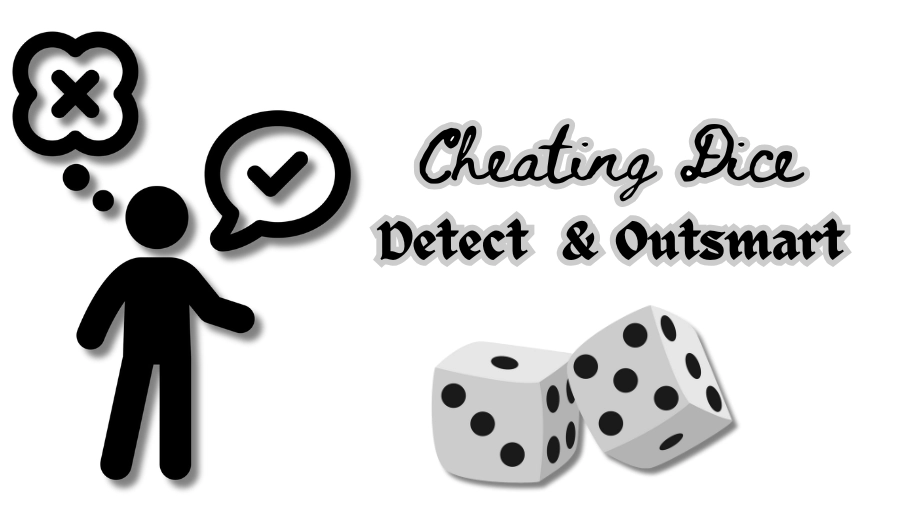What Are Cheating Dice?
From my own experience, I can say that cheating dice may look completely normal, but their purpose is to skew the outcome of the game. They are intentionally designed or modified to make certain numbers come up more often.
They go by various names, such as loaded dice, rigged dice, or gaffed dice. Their use isn’t limited to shady street gambling or casinos—they can sometimes be found even in casual board games or professional setups.
Read More - Increase Your Chances to Win Winzo Snakes and LaddersSome key characteristics of cheating dice include:
- They are weighted or altered in a way that makes one or two numbers show up more often.
- The tampering is so subtle that it is difficult to detect with the naked eye.
- They are used to gain a financial or competitive advantage in a game.
How Cheating Dice Work?
Based on my experience, I’ve learned that dice games may look simple on the surface, but they can be surprisingly tricky—especially when cheating dice are involved.
For centuries, people have been using various techniques to tilt the odds in their favor. Even today, there are multiple ways to manipulate dice so that they appear normal but are actually rigged to skew the game.
Let’s explore how different types of cheating dice actually work:
1. Loaded or Weighted Dice
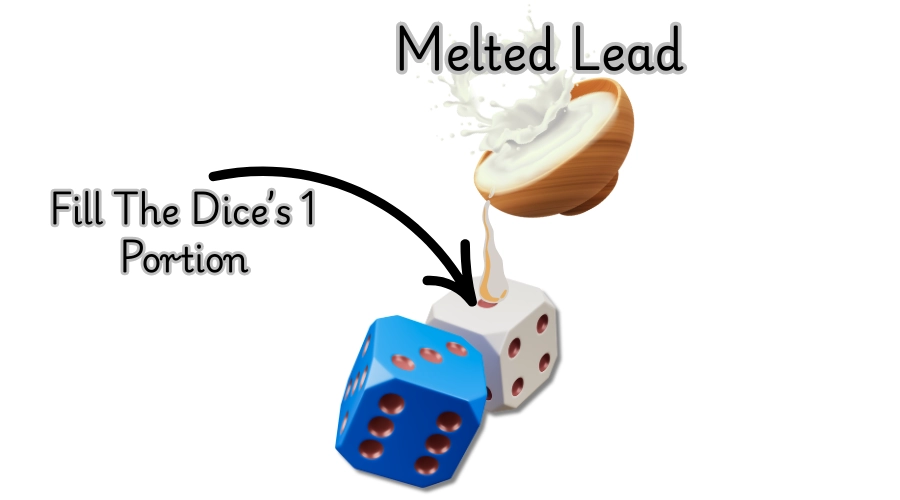
How they work:
These dice have added weight on one side—commonly using materials like lead or tungsten. When the die is rolled, the heavier side tends to land face-down, causing the number on the opposite side to appear more frequently.
Example:
If the weight is placed behind the side marked “1”, then the number “6” will show up more often.
How to detect:
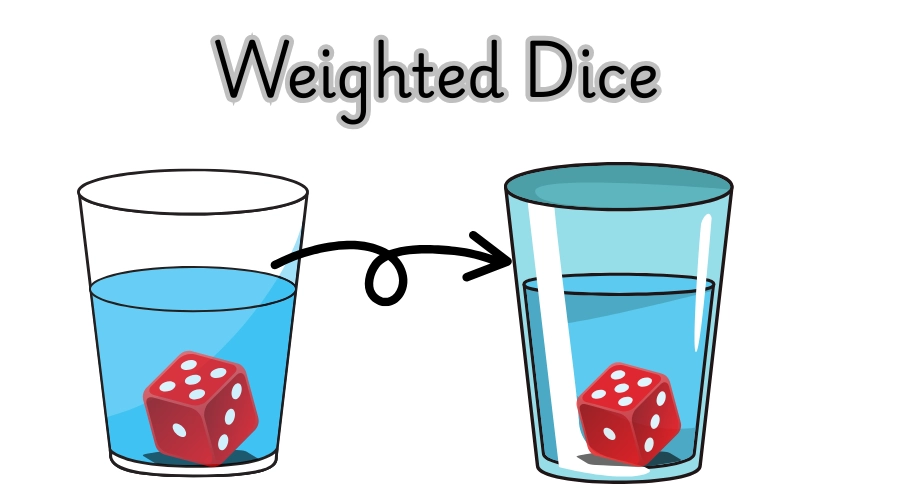
Drop the die into a glass of water—if the same side consistently tilts downward, it may be weighted. Also, watch for recurring outcomes.
2. Shaved and Bevelled Dice
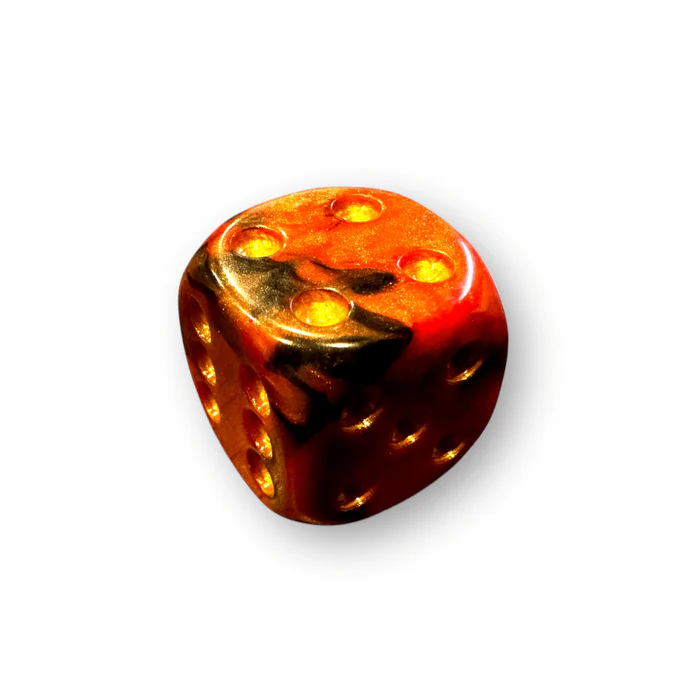
How they work:
The surfaces or corners of these dice are subtly shaved or sanded. This creates a slight imbalance, making the die roll more frequently in a certain direction.
Effect:
Due to the imbalance, certain numbers show up more often.
How to detect:
Gently run your fingers over the surface of the die. If a side feels flatter or more worn down than the rest, it may have been tampered with.
3. Tappers and Micro Tricks
How they work:
These are high-tech cheating dice. They contain small internal devices or liquid-filled chambers that can be activated through light taps or vibrations. The user can switch the die between normal and “cheat mode” during the game.
Effect:
These dice only behave unusually when controlled by the user, allowing manipulation even during live gameplay.
4. Magnetic Dice
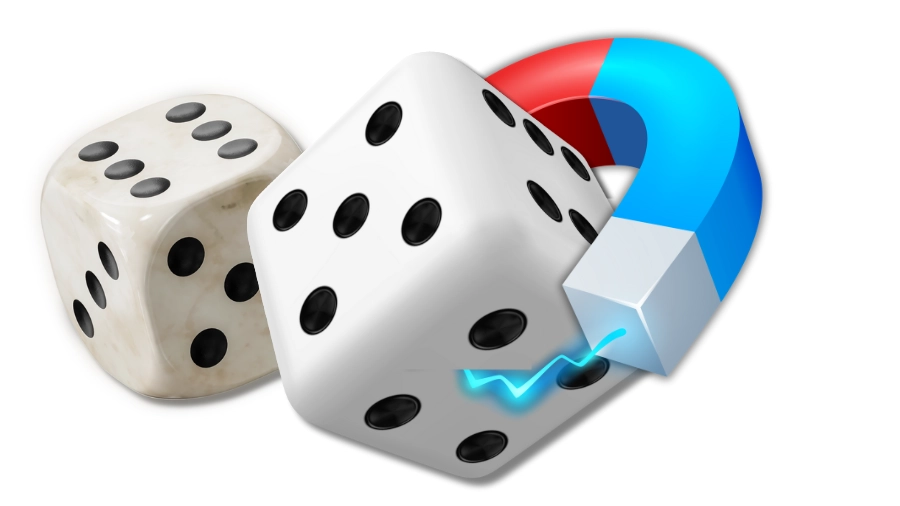
How they work:
A hidden magnet is embedded inside the die, while a matching magnet is concealed under the playing surface or near the player. The magnetic field can influence how the die moves and where it stops.
How to detect:
Bring a strong magnet near the die—if it shifts or pulls slightly, it’s likely magnetized.
5. Heat or Chemically Altered Dice
How they work:
Some cheaters slightly soften the die using heat, allowing them to distort its shape—like bulging one edge. Others use chemical solvents to subtly warp the plastic and disrupt the die’s internal balance.
Effect:
These dice look perfectly normal but tend to roll in a predictable, non-random manner.
6. Optical Illusion Dice
How they work:
These dice are often used in magic tricks or staged performances. A single face may be painted in a way that it appears as one number from a certain angle and changes to another number when viewed differently.
Example:
One face of the die might appear to show “6” when viewed directly, but changes to “5” when tilted slightly.
How to Spot Cheating Dice?
🔍 1. Float Test
- What to Do: Fill a glass with water and gently drop the die into it. If the die has hidden weight, it will consistently tilt in one direction or float in an unusual manner.
- Result: The heavier side will sink—this is a clear sign that the die is weighted.
🔍 2. Visual Inspection
- What to Look For: Examine the die carefully from all angles. If any surface seems worn, edges are uneven, small holes are visible, or the color/material appears irregular, it may indicate tampering.
- Pro Tip: Feel the die with your fingers—if any side feels different from the rest, it might have been altered.
🔍 3. Consistency Check
- What to Do: Roll the same die 50 to 100 times and record the results. If a particular number like ‘6’ or ‘3’ appears far more frequently, its fairness is questionable.
- Note: A fair die usually gives each number approximately an equal number of times.
🔍 4. Magnet Test
- What to Do: Bring a strong magnet close to the die and observe its reaction.
- Result: If the die shifts or tilts toward the magnet, it may contain a hidden magnetic element.
🔍 5. Spin or Balance Test
- What to Do: Spin the die like a top on a flat surface.
- Result: If it doesn’t spin evenly, consistently stops in the same direction, or wobbles unnaturally, it may be unbalanced—suggesting possible tampering.
🔍 6. Digital Weight Test
- What to Do: Place the die on a digital scale and compare its weight to that of a standard die.
- Result: If it’s heavier, there may be extra material added inside—such as metal or magnets.
🔍 7. Saltwater Test (Advanced Technique)
- What to Do: Dissolve some salt in water to increase buoyancy, then place the die in the solution.
- Result: A loaded die may tilt unnaturally or show a visible bias in one direction, indicating hidden weight or imbalance.
FAQs
Loaded dice don’t “always” land on the same number but are biased toward certain outcomes due to added weight or shape manipulation.
Yes, many novelty and magic trick shops sell loaded dice, but they are usually marketed for entertainment purposes.
With some basic tools, weights, and a drill, it’s possible—but highly unethical and potentially illegal—to make your own loaded dice.

